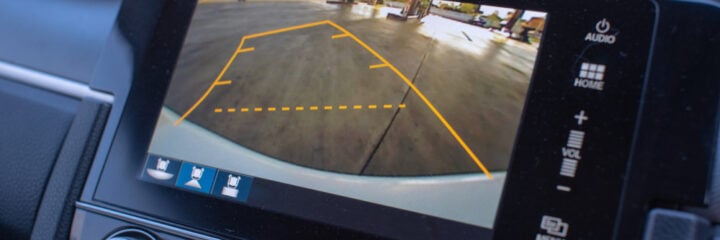Car reverse is the process of driving a car in the opposite direction. It is usually engaged when changing lanes and backing out of a parking spot. Without a reverse capability, you could get stuck in a parking garage. In Automatic Transmission vehicles, the reverse is done by shifting the lever to the R position.
My Car Is Turning Off When Put In Reverse What Now?
Many car owners have at one time or the other experienced this drag of car turning off when put in reverse. Several factors can be responsible for this, including problems in the transmission fluid, IAC valve, torque converter, ignition control module, and engine vacuum. Now, let’s take a quick look at these factors.
1. Low, Dirty, or Leaking Transmission Fluid
Your car would go off when put in reverse if you have a low, dirty, or leaking transmission fluid. The transmission fluid lubricates the surfaces and other components of the transmission system. Fresh transmission fluids come in an almost transparent red color.
When you notice a color change, especially to brownish-red color, it is an indication that the fluid is dirty and needs to be changed. Transmission fluid leakage typically occurs due to failed gasket or loose drain plugs.
How to Check Transmission Fluid Levels?
- Get the dipstick out of the jar
- Wipe it clean
- Dip it into the jar again
- Take it out and check the level on the stick (You want to check the reach of the fluid against the “full” and “low” or “fill” marks on the dipstick)
- Refill if your fluid level is low. Reach out to your mechanic to seal the point of egress if the problem is a leak.
2. Clogged or Failing Idle Air Control (IAC) Valve
The IAC Valve is a device that opens and closes to release air into the engine to improve engine performance. It does this by working with the ECU (Electronic Control Unit) to regulate engine ventilation so that the engine can idle smoothly.
If the valve is clogged, the car may experience stalling when in reverse as airflow to the engine is restricted and the engine has trouble burning fuel (spark-ignited internal combustion). To resolve this, clean the valve or restart the IAC. If the problem persists after doing these, you should enlist the expertise of a qualified automobile technician.
3. Broken or Leaking Torque Converter
The torque converter is a fluid coupling in automatic transmission vehicles that transfers rotating power from the internal combustion engine to the transmission gearbox. It is located between the flexplate of the engine and the transmission. It allows the vehicle to shift automatically between gears. If the torque converter is broken or leaking, the gears would not shift properly, which can cause the motor to stall or turn off when put in reverse.
4. Vacuum Leak
You might want to check the engine vacuum if your car is experiencing a stall when reversing. The engine vacuum is responsible for mixing air and fuel in the right proportions to power the engine. If the ratio of the mixture is wrong, the car is most likely to shut off when put in reverse. Leaking problems can be due to holes in the vacuum and/or wear and tear of the intake gasket.
5. Faulty Ignition Control Module (ICM)
The Ignition Control Module typically sits inside the distributor housing or on the side of the engine compartment. The ICM’s role in your engine’s internal combustion is to “command” the ignition coil to fire the spark plugs at exactly the right time. So, car stalling or turning off when put in reverse can be due to a defective ICM because the spark plugs aren’t getting the right amount of voltage to ignite the fuel.
To Recap
Most drivers are familiar with the frustration that comes with vehicles turning off or stalling when put in reverse. The good news is that the cause of this is usually not one that requires spending a lot of money at the mechanic shop but something the average driver can resolve themselves or the mechanic can fix without burning a big hole in your wallet.
The problem could be a bad or leaking transmission fluid that you can just replace, or your auto mechanic can seal off. Either way, it’s always better to nip a problem in the bud to prevent further damages to your car.


